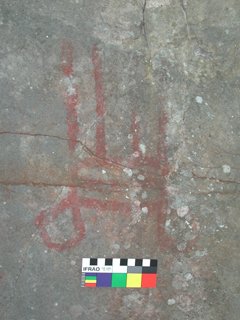Why did Native Americans make rock art?
The question of why rock art was made has intrigued archeologists and the public ever since these images were first noticed and understood to be the products of antiquity. We will never know all the reasons for creating rock art. Some images may represent idle doodling, but the most durable theory of rock art interpretation over the years associates these fascinating images with belief systems and ritual activity.
Archeologists recognize that different kinds of rituals take place in different locations. Rock art produced as part of a ritual or ceremony should reflect these differences. Thus, rock art examples at secluded, hard-to-reach sites might have been made during individual rites performed in solitude (for example, vision quests or puberty rites), while images at larger, more accessible sites may be the result of shaman practices performed for the benefit of the wider community.
Analysis of the subject matter depicted at a rock art site is frequently part of a project to understand the belief system or worldview of its makers. The placement of rock art sites at certain geographical locations, and their relationships to other kinds of sites (such as habitations, hunting areas, or ceremonial centers), can also be studied to enlarge our understanding of the total cultural landscape. For example, isolation or difficulty of access may indicate that a site was considered to be "sacred space." On the other hand, rock art in sites also containing domestic refuse (such as The Narrows) argues for a more integrated social landscape in which ritual activity merged with recreational pastimes in the context of everyday domestic activities. In the latter case, rock art might have played an important part in story-telling, with combined value for education, entertainment, and group solidarity. This narrative function of rock art imagery is one of the current trends in interpretation. |
| Home | Quick Facts | Interpretations | Articles | Technical Papers | Resources | Database | Just For Kids | Picture Gallery | Buy the Book! |
|
Last Updated: April 11, 2007 at 8:27:32 AM Central Time
|

